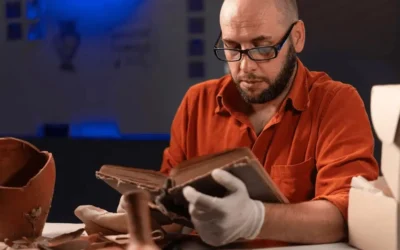College and University Archives; An Evolving Role
Margot Note
Government archives were the most significant component of the profession until the 1970s when the number of academic archives increased. Since then, every survey of archives and archivists has indicated that colleges and universities have the largest contingent of archivists in the United States.
College and university archives are a diverse group for a variety of reasons. Academic institutions come in various shapes and sizes, from small private colleges to large state-funded systems. Some academic archives emphasize the institution’s records, while others function more like a manuscripts repository or even a local historical society. Reporting structures vary. Most academic archives are part of the library, but others are placed elsewhere, such as an administrative unit or the President’s office. An institution can have one archival unit, including institutional archives, faculty papers, other manuscript materials, and rare books and special collections. It can also have multiple libraries and archival repositories.
Records Management
The existence of records management programs that support efficient record keeping and transfer to the archives is uneven. Some universities have active records management programs where records are scheduled to transfer regularly. That records management authority may be part of the archives or reside in another administrative unit, requiring cooperation and coordination. In some publicly funded universities, records scheduling occurs with other state agencies, with schedules approved by them.
Research suggests that the institutional culture of colleges and universities has been changing slowly. College and university archives were traditionally established to document the history of the school. But over time, academic archives are evolving into a more informational role. The custodial frame of mind, emphasizing the institution’s history, predominates in many places, while other repositories have embraced the role of the archives as an essential information center for the larger academic institution. This shift will be increasingly important with electronic records and tight budgets where the relevance of the archives to the institution’s mission must be demonstrated. This issue is a microcosm of what is going on in archives in all kinds of institutional settings.
Connecting to the Mission
Consider the relevance of the archives to the institution’s larger mission. One would think this would be clear in an educational setting, or at least more evident perhaps than in a corporation where the bottom line is the most important. But, frankly, many colleges and universities act like corporations. The question for any college or university is how well the archives’ mission is linked to the larger institution.
For appraisal, the approach is to apply functional analysis to the academic setting. Functional analysis is quite a realistic approach since comprehensive records management is often lacking in colleges and universities. A small archival staff will not devote attention to assessing all offices and all recordkeeping systems.
Where should they start? In Varsity Letters: Documenting Modern Colleges and Universities (1998), Helen Willa Samuels notes that colleges and universities have three missions: teaching, research, and service. Within those missions, she identifies seven functions that define colleges and universities.
These institutions confer credentials, convey knowledge, foster socialization, promote culture, provide public service, conduct research, and sustain the university. She points out the importance of seeking official and non-official materials within those functions because they complement each other.
A More Comprehensive Record
With functional analysis, the environment, players, and influences are described within each function, and relevant documentation is suggested. The idea is that the archivist can translate that documentation into the structure of the specific academic institution to identify where significant materials would exist.
Archivists should not just deal with the records they have but also identify gaps and respond to scarcity areas. If archivists understand the scope and mission of higher education institutions, they know what records to pursue and preserve to document all aspects of collegiate life.
Margot Note
Margot Note, archivist, consultant, and Lucidea Press author is a regular blogger and popular webinar presenter for Lucidea, provider of ArchivEra, archival collections management software for today’s challenges and tomorrow’s opportunities. Read more of Margot’s posts here.
Similar Posts
Texas Archive of the Moving Image: Interview with the Digital Archivist
I recently interviewed Grace Muñoz about her work at the Texas Archive of the Moving Image. Her work on improving the discoverability of the multimedia collection is fascinating.
How to Conduct Comprehensive Archival Surveys
Conducting a comprehensive archival survey is critical to successfully managing archival collections.
Remembering History, Moving Forward Together, with ArchivEra
The Catholic Diocese of Arlington’s Director of Archives selected ArchivEra to manage their collections of historical and cultural significance, and strike a balance between security and access.
Unveiling Archival Impact
The transformative power of storytelling depends upon the strategic choices that top archival performers make and the shift from being record-keepers to change agents.




Leave a Comment
Comments are reviewed and must adhere to our comments policy.
0 Comments